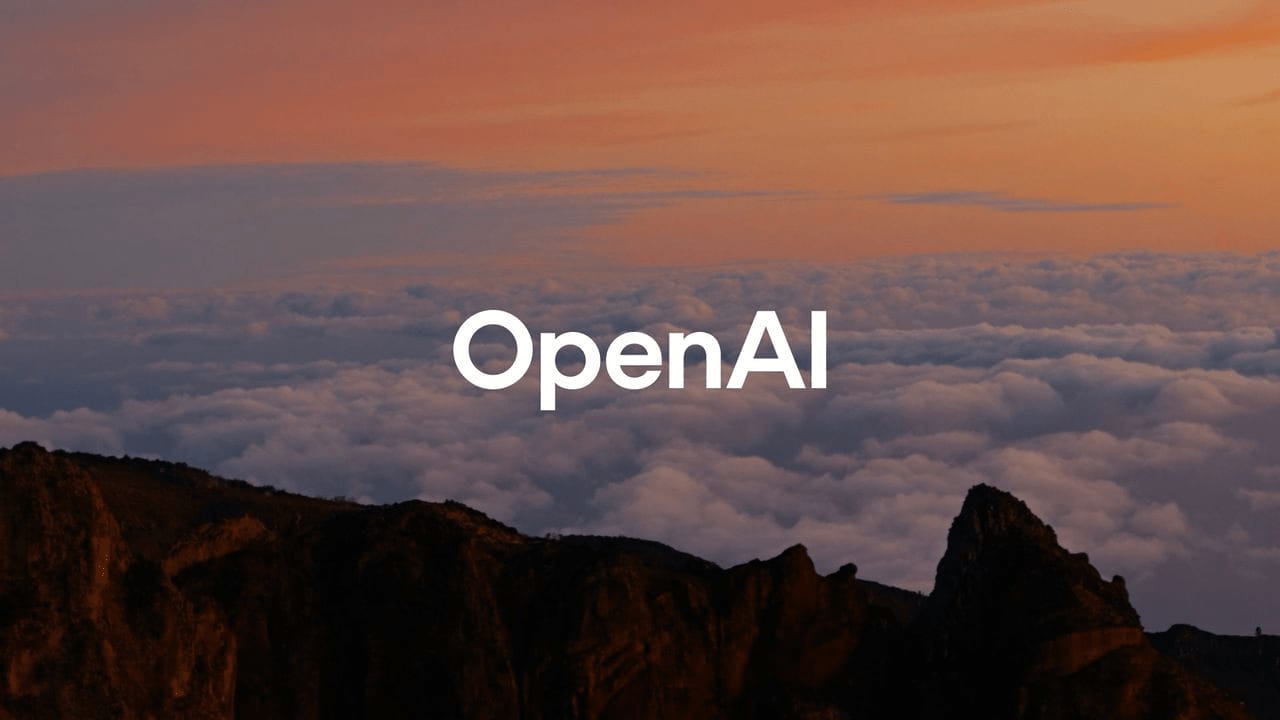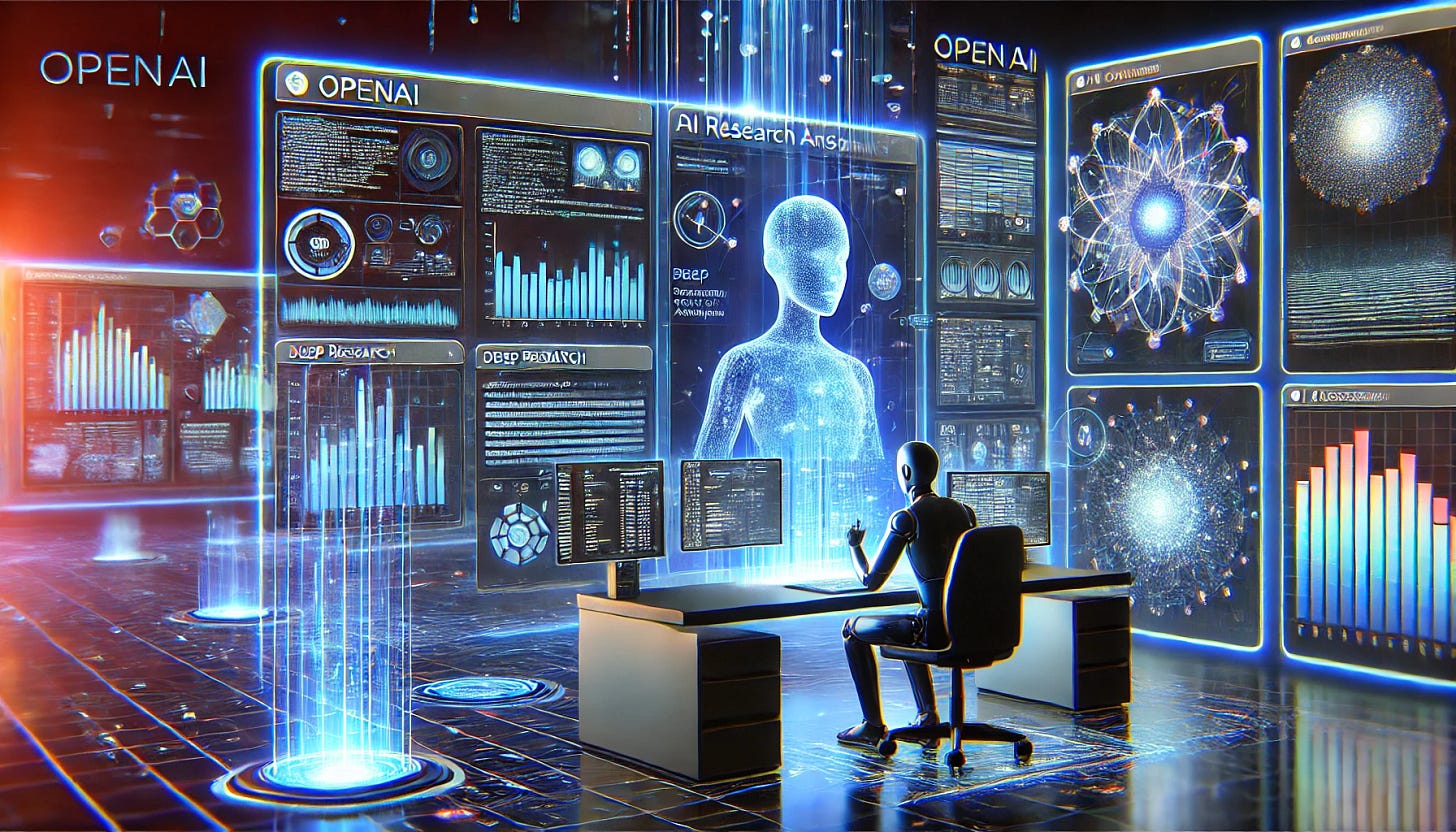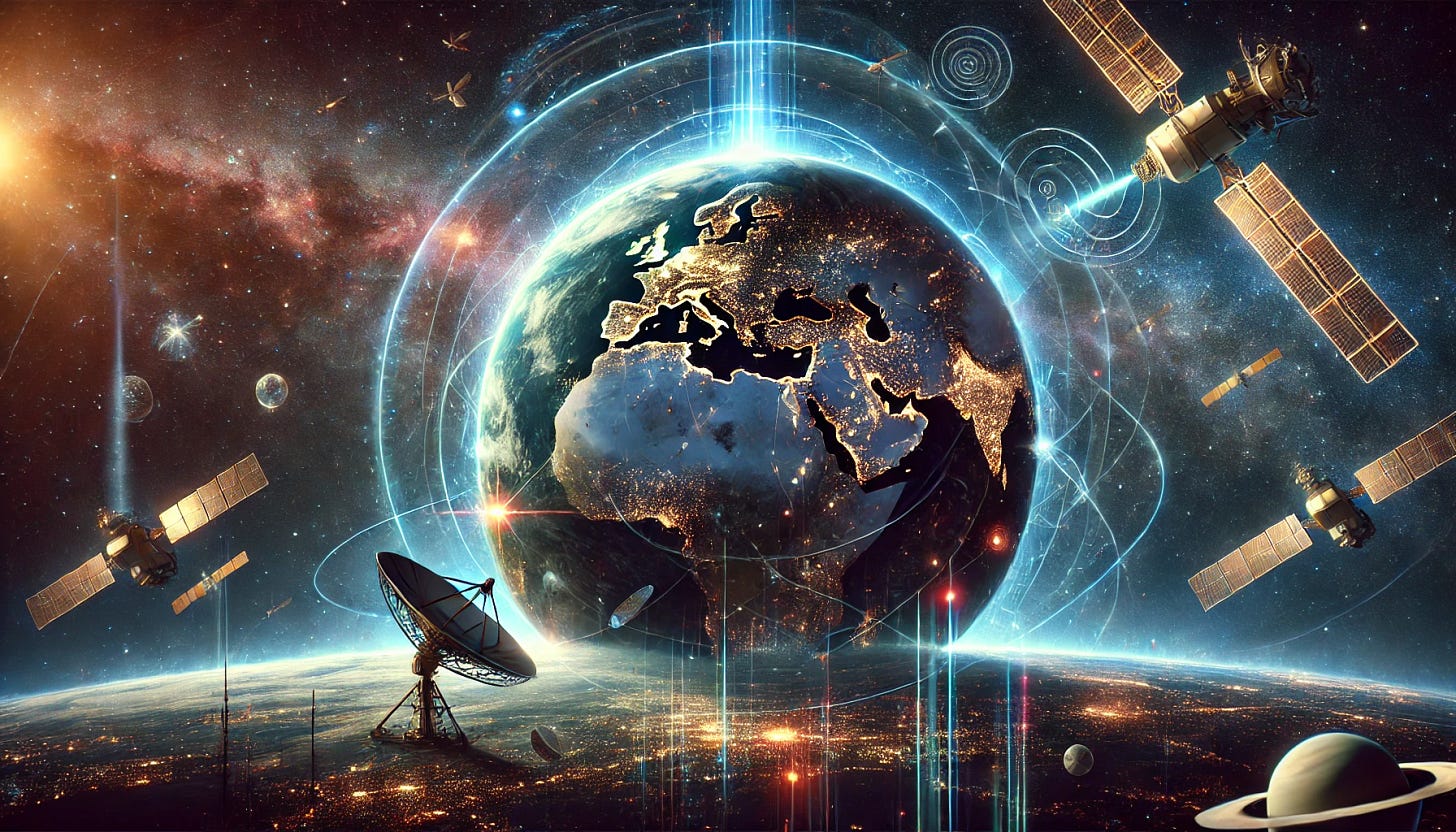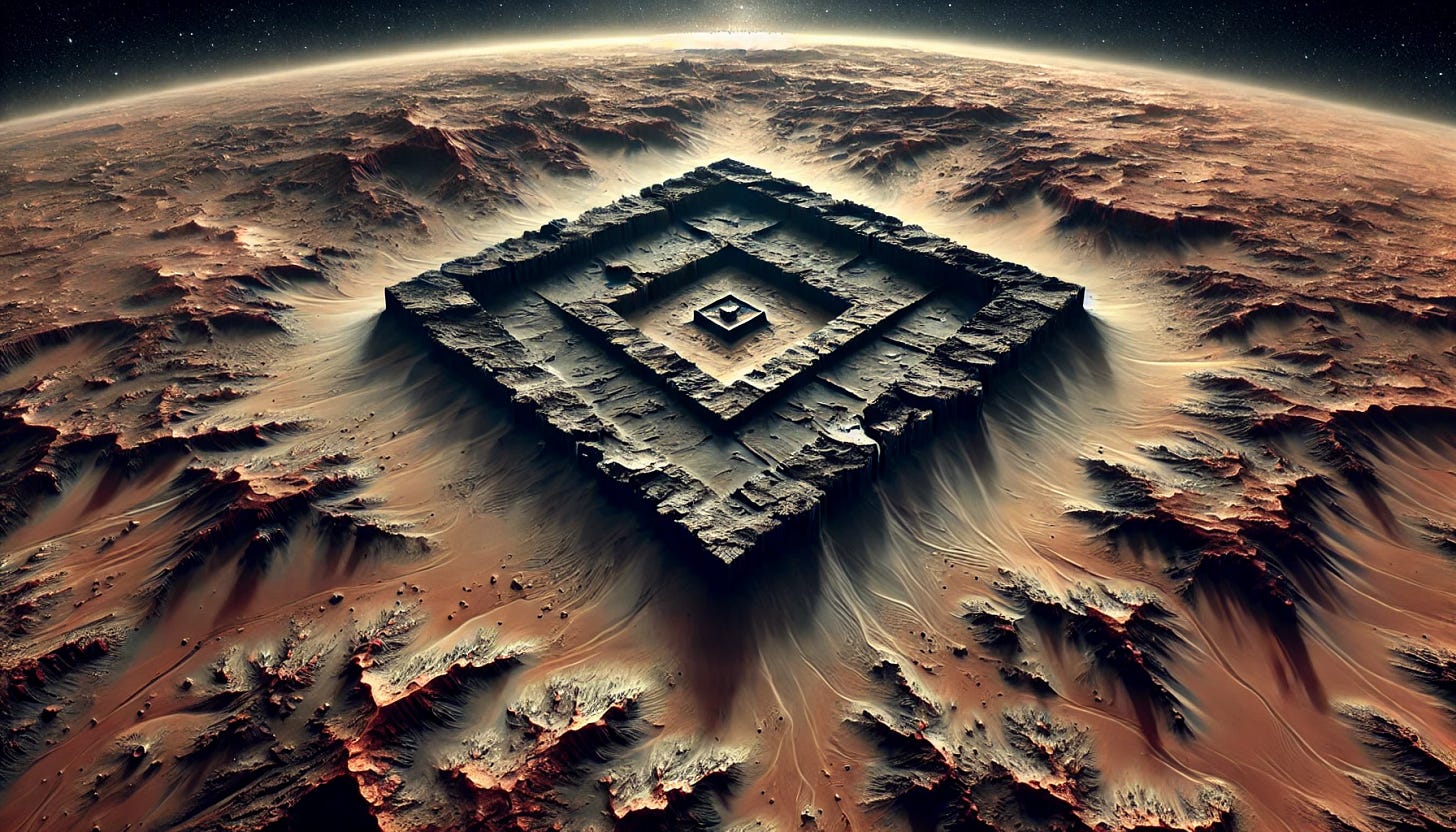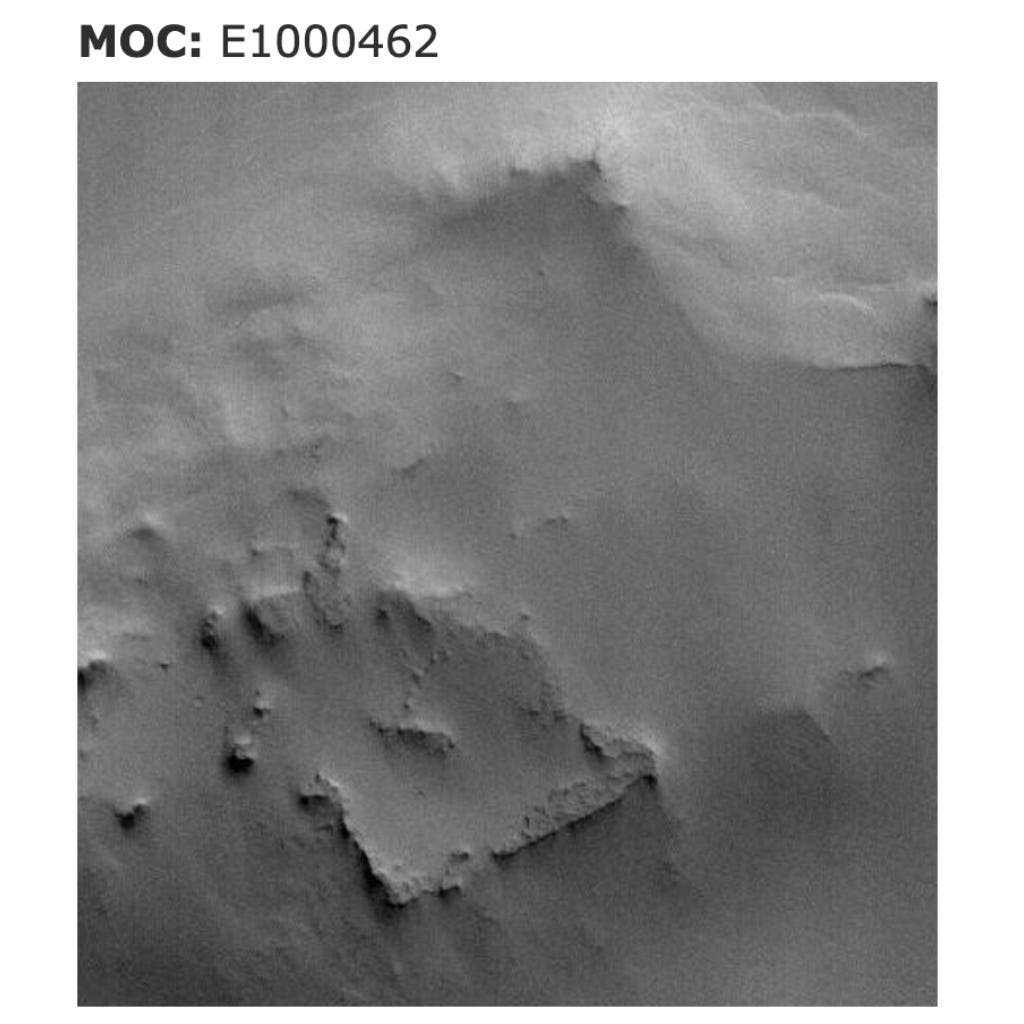Geeky Weekend Digest | 08.02.2025
In this weekend’s #GeekyWeekendDigest… OpenAI rebrands, AI accelerates cancer detection, Earth’s signals reach deep space, and Mars sparks debate!
Step into the Future with Geeky Weekend Digest
The future isn’t something we wait for—it’s something we shape. Geeky Weekend Digest is your gateway to the latest breakthroughs in AI, space exploration, and transformative science, where cutting-edge ideas collide with the limitless potential of human innovation. Each edition explores the technologies redefining our world, the discoveries expanding our understanding of life and the cosmos, and the paradigm shifts that challenge what we believe is possible. This is more than a newsletter—it’s a lens into the accelerating future, designed for those who think beyond the present and dare to imagine what’s next. Whether you’re a creator, thinker, or disruptor, join the journey into the uncharted territories of consciousness, technology, and the next phase of human evolution. The future isn’t ahead of us—it’s happening now.
OpenAI Rebrands: A New Look for the Future of AI
OpenAI has introduced a comprehensive rebrand, refining its visual identity to better reflect its vision at the intersection of humanity and technology. The revamp includes a sleek new logo, a custom-built typeface called OpenAI Sans, a reimagined colour palette, and innovative imagery that brings a more human-centric feel to the AI giant’s public presence.
Refined OpenAI Logo
Improved symmetry – The updated "blossom" logo now features uniform line thickness for a more balanced look.
Geometric precision – OpenAI refined its signature three-interwoven-triangle structure for clarity.
Versatility – The logo now has weighted variations for different branding applications.
Symbolism – The new design embodies human warmth (circles) and technological precision (angles).
Brand hierarchy – While the logo remains central, OpenAI’s wordmark will take on greater prominence.
OpenAI Sans Typeface
Custom-built typography – OpenAI Sans merges geometric structure with organic softness.
Human-like imperfections – Deliberate design choices make the font feel inviting and approachable.
Strengthening brand identity – A proprietary typeface creates consistency across all OpenAI platforms.
Updated Colours and Imagery
A natural palette – Greys and blues mimic horizons and open spaces, softening OpenAI’s previously tech-heavy image.
Commissioned photography – OpenAI integrates real-world still lifes and landscapes to humanise its branding.
The 'Emotive Point' – A dynamic, swirling visual that represents ChatGPT’s "voice" and responds to user interactions.
AI-generated graphics – OpenAI’s own Sora model renders abstract visuals that blend organic and digital aesthetics.
Leadership and Vision
The rebrand, initiated by CEO Sam Altman, was led by Head of Design Veit Moeller and Design Director Shannon Jager, collaborating with global creative teams. Their approach highlights OpenAI’s belief that AI should amplify—rather than replace—human creativity.
OpenAI Debuts AI Research Assistant
Introducing Deep Research – OpenAI launched a new ChatGPT feature that conducts extensive web research and delivers detailed reports with citations.
Advanced AI analysis – Using an upgraded o3 model, it processes text, images, and PDFs from multiple sources in under 30 minutes.
Exclusive access – Initially available only to Pro subscribers ($200/mo) with 100 queries per month.
Impressive benchmarks – Deep Research scored 26.6% on Humanity’s Last Exam, outperforming other AI models like Gemini Thinking (6.2%) and GPT-4o (3.3%).
Why It Matters
OpenAI’s rebrand is more than a visual refresh—it signals a strategic shift toward a more relatable and humanised AI presence. Meanwhile, Deep Research marks a significant step toward AI handling complex, time-consuming tasks, reshaping how we access and synthesise knowledge.
Closing Thoughts
A more cohesive brand identity helps OpenAI maintain its leadership in AI innovation while making its technology feel more accessible. As AI systems take on deeper research capabilities, we inch closer to a future where AI plays an active role in long-form reasoning and knowledge discovery.
AI Creates a Database to Help Detect Cancer Earlier
Researchers at Johns Hopkins University have developed AbdomenAtlas, a groundbreaking AI-powered dataset of 45,000 3D CT scans, each annotated with 142 anatomical structures. This dataset dramatically enhances AI’s ability to detect early-stage cancer and accelerate medical imaging analysis.
Key Details
Unprecedented scale – 36 times larger than any existing medical imaging dataset.
Global collaboration – Scans sourced from 145 hospitals worldwide.
AI-powered efficiency – Tasks that would take humans 2,500 years were completed in just two years.
Speed breakthroughs – AI achieved a 500-fold speedup in organ annotation and a 10-fold speedup in tumour identification.
Ongoing expansion – AbdomenAtlas will continue growing, integrating more scans, organs, and tumour data.
Why It Matters
Medical AI thrives on data, and AbdomenAtlas represents a quantum leap in dataset availability. By providing AI models with vastly more comprehensive training material, this initiative could revolutionise early cancer detection, leading to faster diagnoses and more effective treatments. However, even at 45,000 scans, it’s just a tiny fraction of global medical imaging data—highlighting how much further the field needs to grow.
Closing Thoughts
This breakthrough underscores AI’s role as a force multiplier in medicine, helping doctors make life-saving diagnoses faster than ever. With continued expansion, datasets like AbdomenAtlas could redefine how we approach early cancer screening and personalised healthcare.
Earth’s Technosignature Detectability
A major new study from the SETI Institute, led by Dr Sofia Sheikh, has determined that Earth’s most powerful technosignatures—such as planetary radar signals—could be detectable by extraterrestrial civilizations up to 12,000 light-years away. This research offers a fresh perspective on how visible Earth is to potential alien observers.
Key Findings
Radio signals travel the farthest – Emissions from the former Arecibo Observatory could be detectable up to 12,000 light-years away.
Atmospheric technosignatures – Pollution markers like nitrogen dioxide could soon be detectable up to 5.7 light-years away by the upcoming Habitable Worlds Observatory (HWO).
A layered detection process – As an observer moves closer to Earth, they would detect:
Distant range: Radio emissions
Mid-range: Atmospheric pollutants and city lights
Close range: Lasers, satellites, and surface modifications
The Future of Technosignature Research
Revival of SETI funding – NASA has reintroduced funding for technosignature research, expanding search efforts.
Advanced detection methods – Machine learning and multi-wavelength analysis improve signal identification.
The absence of technosignatures is also data – If no signs of alien technology are found, it challenges assumptions about intelligent life’s prevalence.
Why It Matters
Technosignature research represents a cost-effective, high-impact approach to the search for extraterrestrial intelligence. By understanding our own detectability, we refine the methods we use to scan the cosmos for other civilizations. Whether we find signals or silence, the implications are profound.
Closing Thoughts
Are we alone? This study reaffirms that Earth is broadcasting its technological presence into the cosmos—whether anyone is listening is another question entirely. With new telescopes coming online, our ability to detect alien technosignatures is improving, bringing us closer to potential first contact.
One More Thing…
Mars' Mysterious Square Structure
A NASA image showing a near-perfect square structure on Mars has ignited widespread speculation, with Elon Musk advocating for an urgent mission to investigate. Captured by the Mars Global Surveyor’s Mars Orbiter Camera in 2001, the mysterious formation spans approximately 3 kilometres and has fueled debate about whether it’s a product of natural geological processes or evidence of ancient Martian civilizations.
Mars’ Square Structure Dimensions
Geometric precision – The structure measures approximately 235 meters (770 feet) per side, resembling Earth's Great Pyramid of Giza (230 meters).
Strategic location – It sits atop a Martian crater with a 51.5-degree slope angle.
Size comparison – The entire surrounding area spans about 3 kilometres (1.9 miles).
Public Reaction and Theories
Viral speculation – Social media exploded with reactions, with Joe Rogan calling it "fking WILD**" and Musk demanding astronauts investigate.
Alien megastructure theories – Conspiracy theorists claim the structure hints at an ancient civilization.
Scientific scepticism – Experts suggest geological processes, not extraterrestrial builders, shaped the formation.
Martian Anomalies: Misinterpretations or Clues to the Past?
Mars has long been a source of intrigue, with various surface features sparking debate over whether they are products of natural processes or remnants of something more enigmatic.
The “Face on Mars” (1976) – NASA’s Viking 1 orbiter captured a striking image of what appeared to be a face in the Cydonia region. While later high-resolution images suggested it was a natural rock formation, the feature continues to fuel speculation and inspire further analysis. Could there be more to this anomaly than meets the eye?
The Martian Canals (1877) – When Italian astronomer Giovanni Schiaparelli observed linear features on Mars, he called them canali (channels), a term later misinterpreted as artificial canals. The idea of an advanced Martian civilization took hold for decades before being debunked as an optical illusion caused by the limitations of early telescopes.
Other anomalies – Over the years, countless images from Mars have prompted questions about geometric formations, unusual rock patterns, and what appear to be artificial structures. With more advanced imaging and future Mars missions, new data may continue to challenge or confirm existing explanations.
Possible Geological Explanation for Geometry…
While the square structure on Mars might appear artificial, similar formations on Earth suggest that natural geological processes could be responsible. However, much remains unknown, and more research is needed to determine the true origins of this enigmatic formation.
Fracturing – Mars’ crust experiences intense thermal expansion and contraction, which can create highly regular fracture patterns, sometimes forming nearly perfect squares or polygons.
Wind erosion – Over millions of years, powerful Martian winds sculpt rock surfaces, leading to distinct geometric formations that may appear unnatural at first glance.
Lava flows and cooling patterns – Ancient volcanic activity on Mars could have resulted in hardened lava formations breaking into geometric shapes, similar to the Giant’s Causeway in Ireland.
Impact cratering and subsurface shifts – The structure’s location atop a crater suggests a possible connection to impact-induced geological shifts, where shock waves from meteorite impacts created underground stress patterns that manifested as geometric formations.
As Mars exploration advances, more high-resolution data and, eventually, direct surface analysis will help determine whether these formations are purely geological—or something more mysterious.
Why It Matters
This latest Mars anomaly highlights humanity’s enduring fascination with the Red Planet and the possibility of discovering something beyond mere geology. While natural processes could explain the structure, its near-perfect symmetry invites further investigation rather than outright dismissal. The history of Martian anomalies reminds us that scientific scepticism and open-minded inquiry must go hand in hand. Whether through Elon Musk’s ambitions, NASA’s ongoing missions, or future advancements in planetary exploration, the search for answers continues—and with it, the dream of uncovering something truly extraordinary.
Closing Thoughts
Mars remains a world of unresolved mysteries, with each new anomaly adding to the intrigue. While history has shown that many seemingly artificial formations turn out to have natural explanations, we are still in the early stages of truly understanding the Martian landscape. As technology advances and humanity moves closer to setting foot on Mars, discoveries like this remind us that the planet may yet hold surprises—perhaps even ones that challenge what we think we know.
This Week’s Geeky Weekend Digest…
From OpenAI’s bold rebrand to an AI-powered medical breakthrough, and a fascinating study on Earth’s detectability to extraterrestrials, this week’s edition has been packed with insights at the frontier of technology and discovery. We also explored a mysterious square structure on Mars, reigniting speculation about the Red Planet’s hidden history.
Your Thoughts?
Which of these stories intrigued you the most? Are we on the verge of detecting alien civilizations, or should we be more concerned about who’s detecting us? And what do you think of OpenAI’s new look—does it make AI feel more human or more corporate?
Let’s continue the conversation! Share your thoughts with me on 𝕏 @frankdasilva or check out more insights on Frank Da Silva – Living The Future. 🚀
That’s a Wrap!
That’s it for this weekend’s Geeky Weekend Digest! Stay curious, inspired, and open to the extraordinary. See you next week for more deep dives into the cutting edge of AI, space, and the mysteries shaping our future.






